Writing (simultan) (2020)
Sound installation with three glass tables à 27 Petri-dishes and piezo speakers, radios, graphite, relay boards, light.
Writing (simultan) is a sound installation that looks at the pure productivity, the intrinsic motion of an automated writing process, a process in which computers endlessly rewrite sonic gestures based on already available “streams” of sound, drawn from FM radio receivers. These streams are deconstructed by focusing solely at the acoustic self-similarity of the sounds, demoting semantic information to the background, and bringing the act of connection, drift and simultaneity to the foreground, as well as the material quality of projecting the sound onto physical objects (Petri dishes).
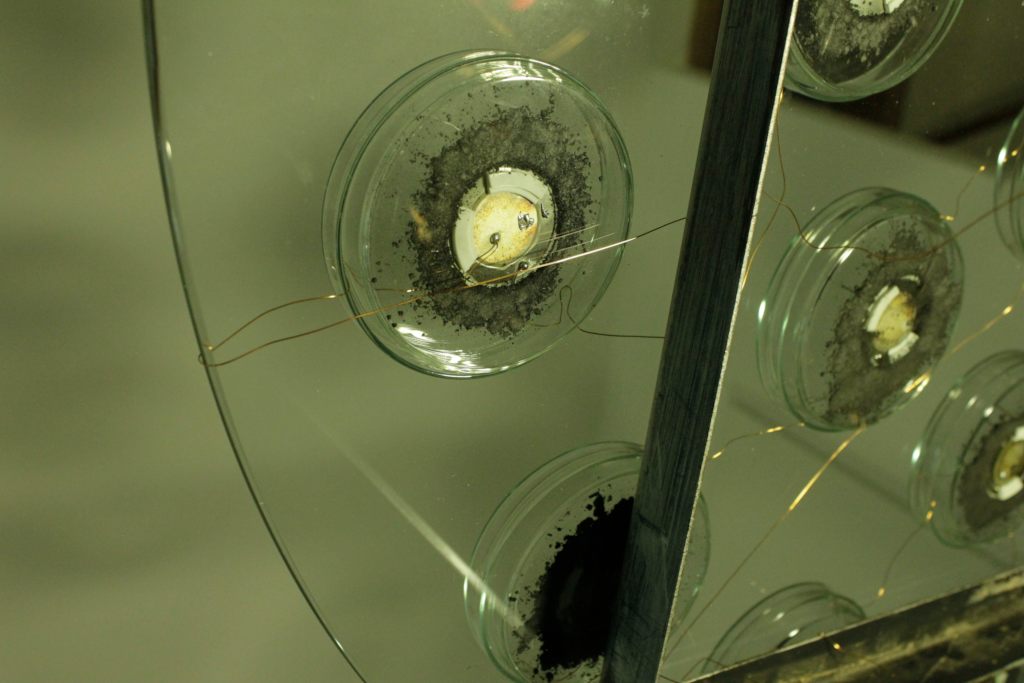
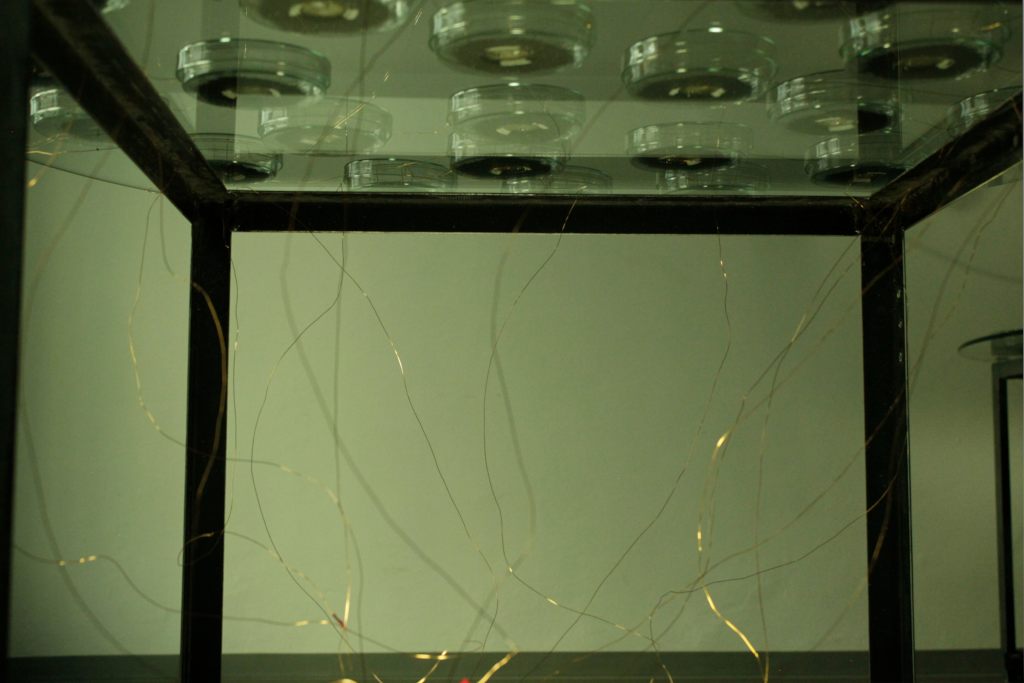
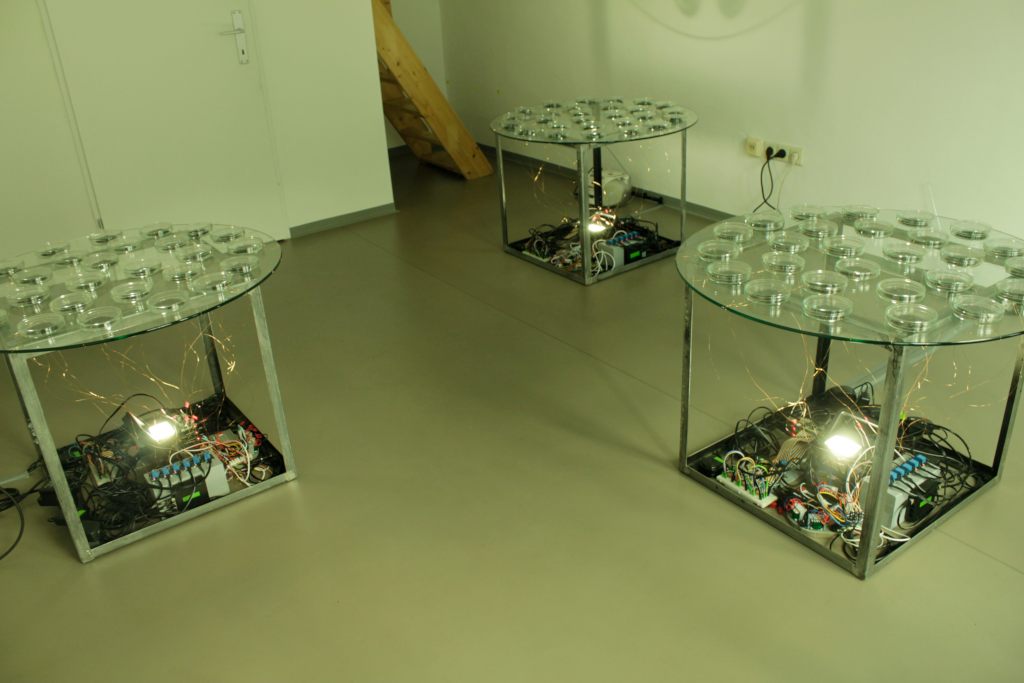
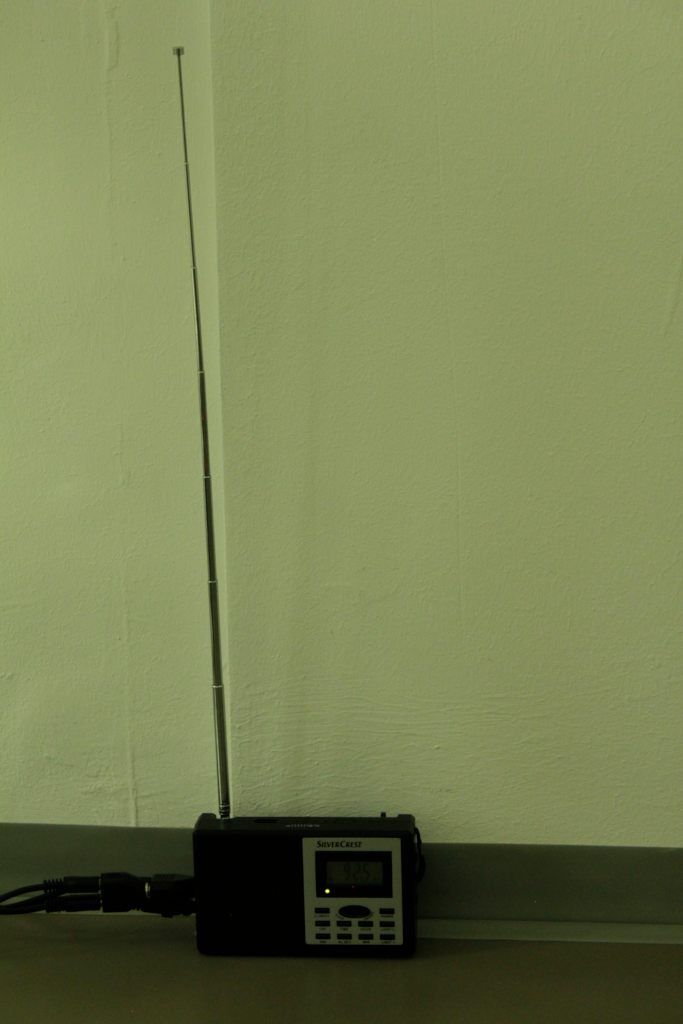
Writing (simultan) (room rec.)
The piece reconfigures two previous instances Writing Machine (2011) and wr_t_ng m_ch_n_ (2017), highlighting a new interest in the coming-together of otherwise independently operating processes. The basic principle still holds: to initiate a possibly endless writing and rewriting process, using a sound “database”, a reservoir of sound material, that is always kept “filled” till a certain level. A process iteratively evolves a “sound phrase”, a sound object of a few dozen seconds, by identifying a portion in the current object that should be overwritten, then searching the database for an acoustically similar fragment, cutting it out from the database and pasting it over the identified location. At the same time, small movements are allowed that make the sound phrase slowly expand and contract in duration.
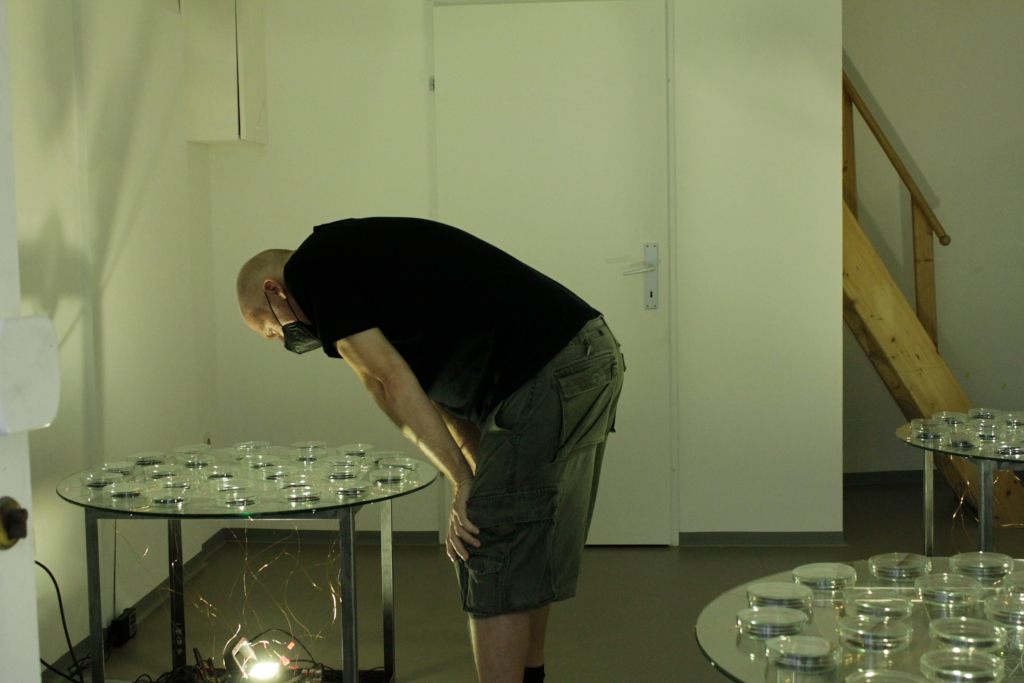
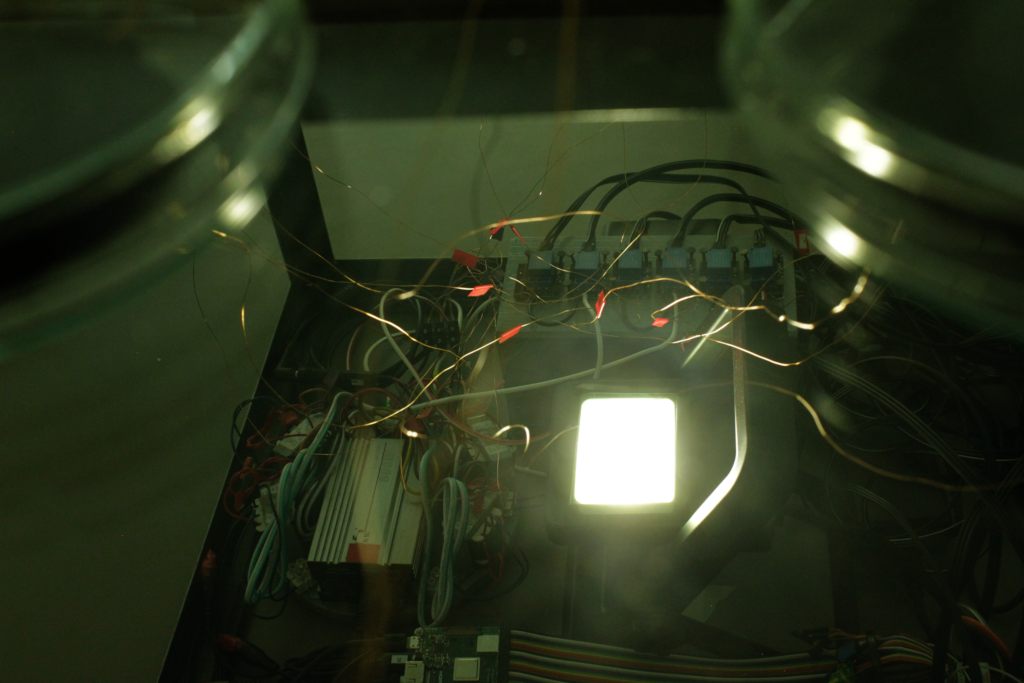
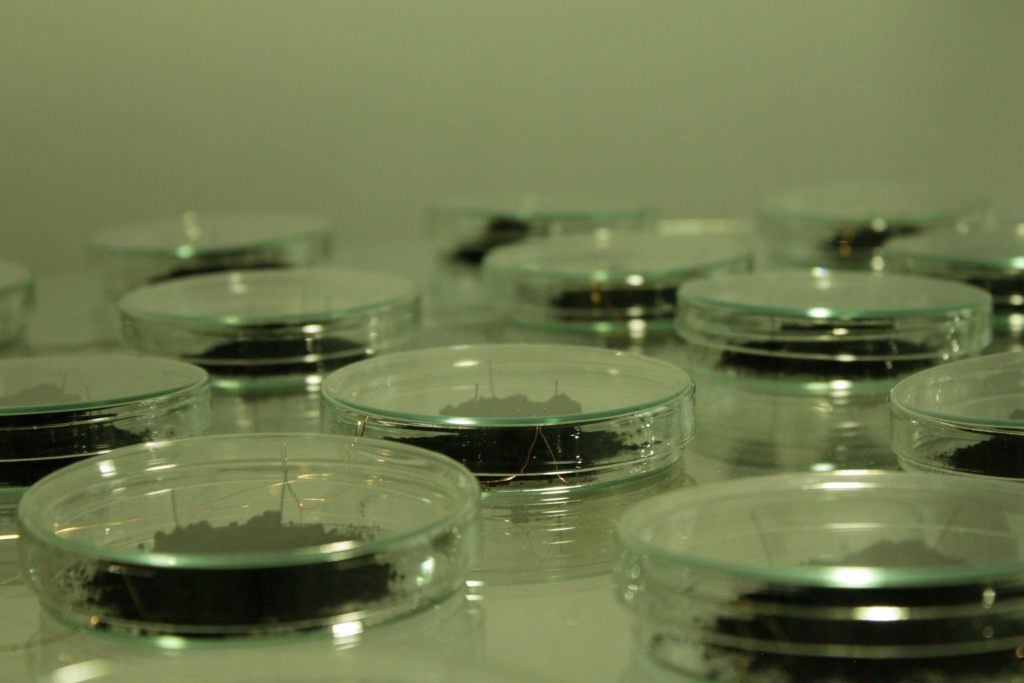
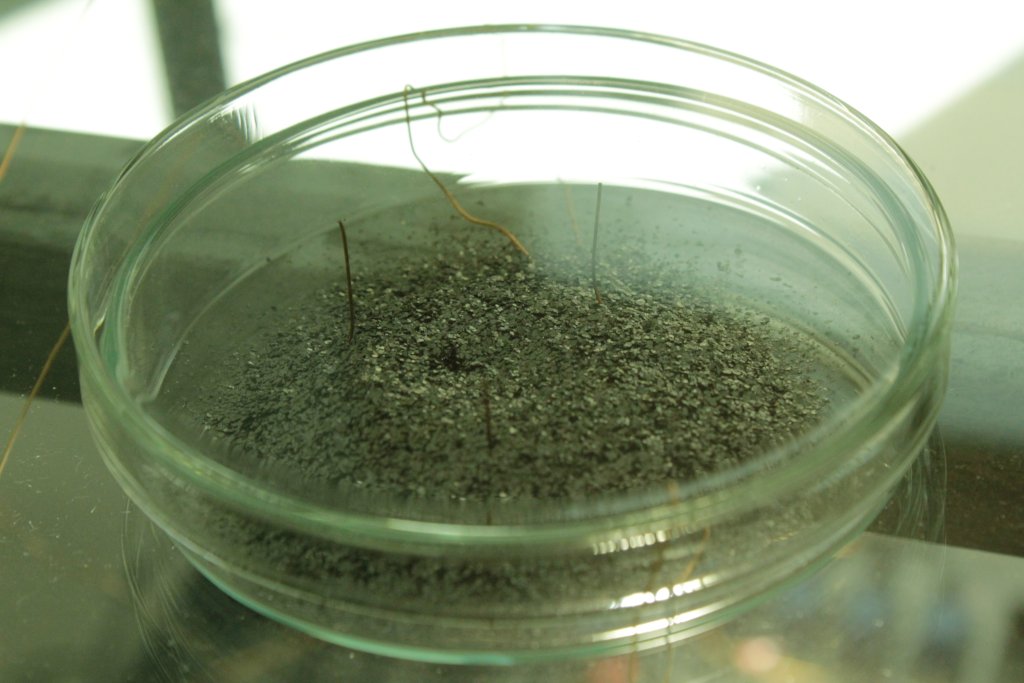
The arrangement of this third instance keeps following a circular layout of Petri-dishes, which become speakers through excitation by piezo discs attached with thin wires. Moving away from a single central table, there are now three tables distributed in space, with 27 dishes per table, wired as groups (“nodes”) of three. The tables exist independently of each other without any form of coupling or synchronisation. Also the databases and phrases of each node evolve independently, although each table is coupled to the same radio stream. Mechanical relays are used to move along the clockwise direction from node to node, producing an additional audible signal and rhythmic element. Each table has a different granulation of graphite powder, and is thus visually distinct. The computational and electronic components are visibly situated below the table’s circular glass plate, with filigree copper wires making an entangled connection between the geometrically tidy surface and the dense placement of electronics. A light points upwards and paints shadows on the walls; the daylight is slightly tinted in green. If one sits on the floor, one can see the Petri dishes from below, revealing the piezo discs otherwise hidden within the graphite heaps.
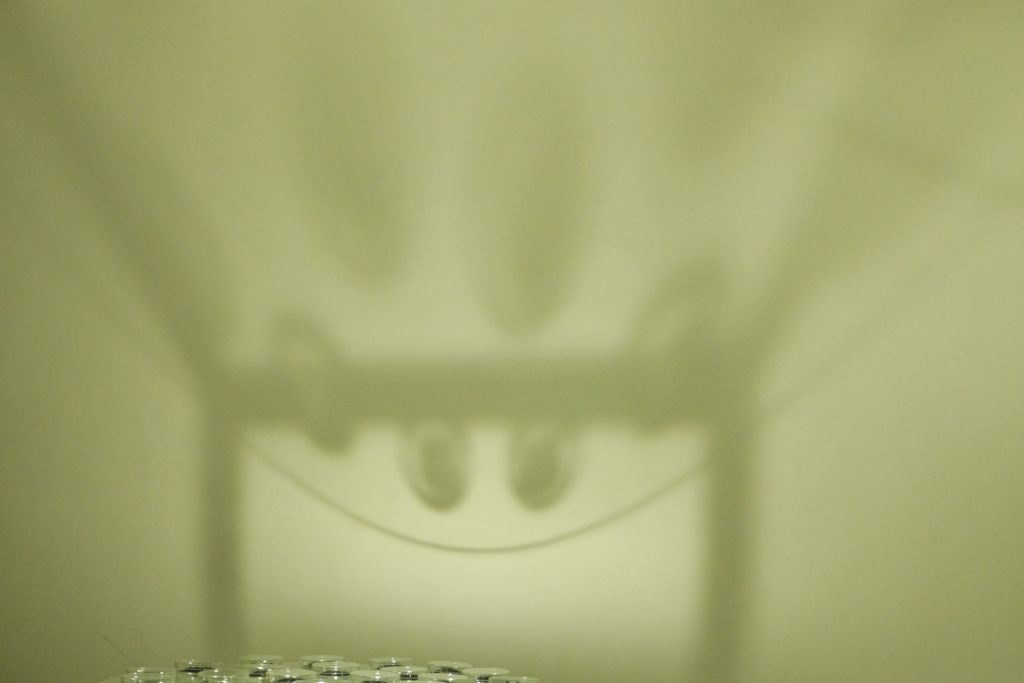
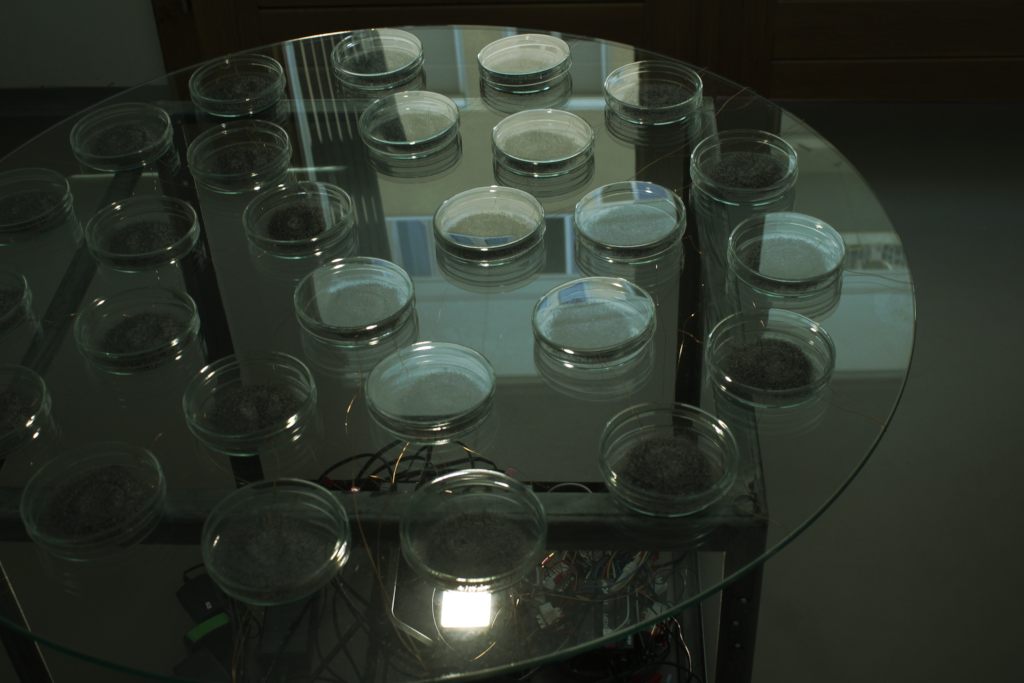
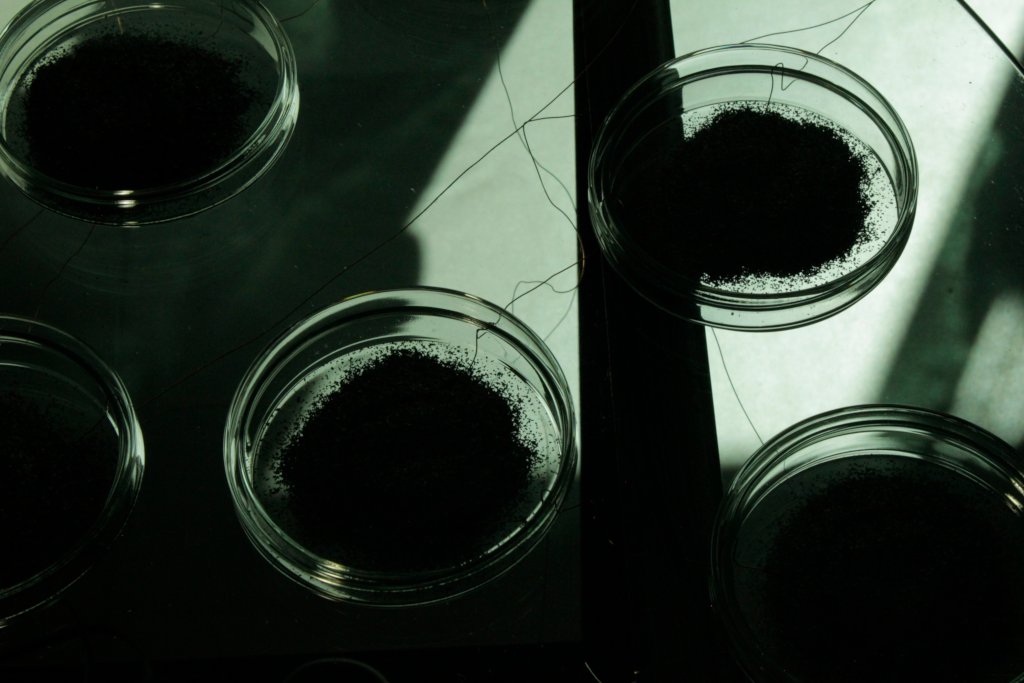
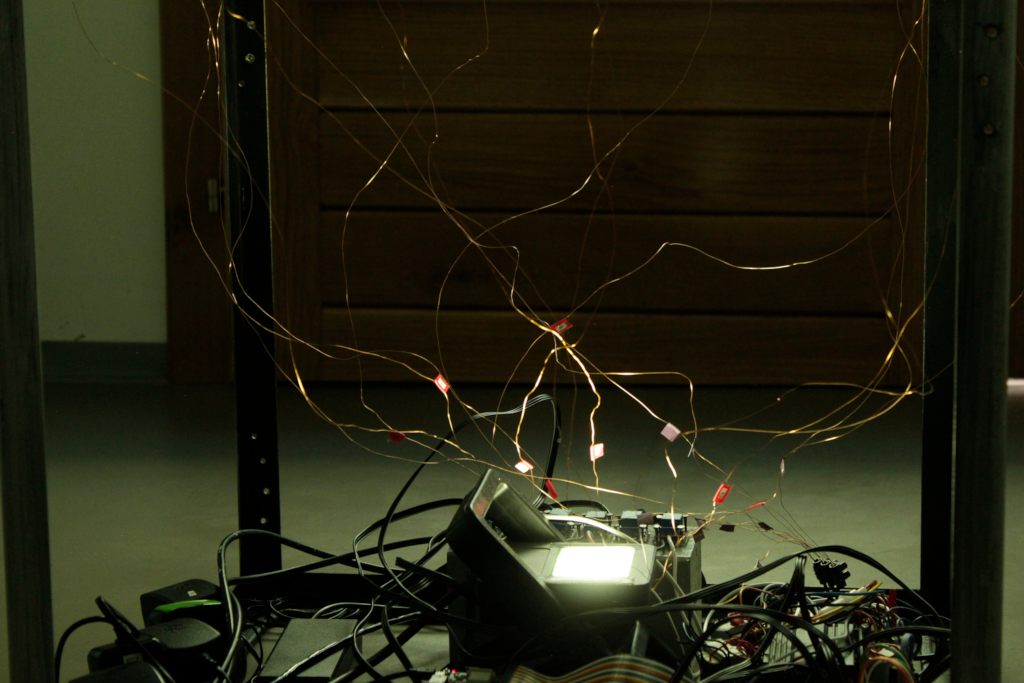
The new simultaneous situation has indeed a decentralising effect, but it also makes it more difficult to focus the hearing on a particular table or sound. Therefore, I added a “dust” process, where from time to time a table passes around a “silent” token, and each node playing a low volume dust crackling sound instead of the sound phrases, making it possible to focus the ear on the other tables. At the same time, the dust process highligts the acoustic properties of the Petri dishes themselves, which you can hear shift from node to node as the wires that transmit the sounds have slightly differening positions. Each table has different dust frequencies, making a correspondence with the granulation of the graphite powder.
Further Links
- Documentation on the Research Catalogue.
- Umbrella project Algorithmic Segments